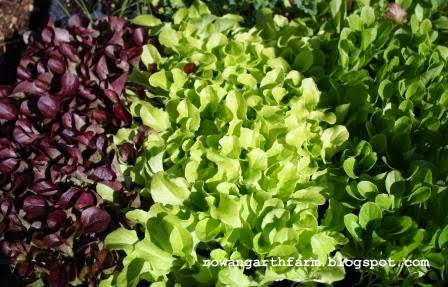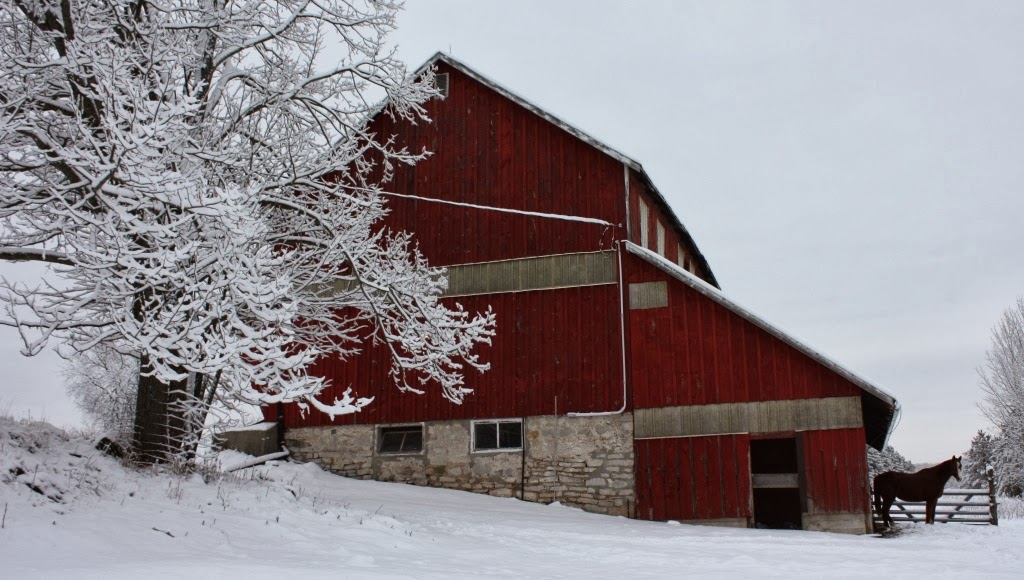I was looking at some of the
GRIT blogs the other day when I came across a posting called "
Foodie Thoughts" by senior associate editor, Jean Teller.
I'm all for thinking about food and with one click, I was instantly rewarded with a tantalizing photo of homemade macaroni & cheese, one of my favourite comfort food indiscretions. (I'm also partial to the occasional fish & chips meal. I'm sure cardiologists and dietitians everywhere would scoff at this revelation, but there you have it.)
I'm always on the lookout for new recipes and while I didn't find a mac & cheese recipe (a cookoff for the best recipes is apparently in the works) there was another one that caught my eye.
Vinegar Pie.
Vinegar pie? My first reaction was, BLECHHHHHHH!!!! And that's coming from a self-avowed fish & chip fan. But vinegar pie? I just didn't get it. But it peaked my curiosity so I read a bit further.
Apparently, vinegar pie (a popular request among GRIT readers and I'm sure many of them could teach me a thing or two about country living) was traditionally an "adversity pie" eaten before the spring rhubarb was up and after the winter supply of fruit was gone. Like many "pioneer"-style recipes, its origins are disputed (some say Texas, others New England) but it was from a time before freezers, fridges, pressure cookers and eating out of season.
It was from a time when the 100-mile diet was everyday -- not revolutionary -- thinking.
While the sound of it made my face pucker, I loved the idea of this imitation lemon pie -- how it embodied the idea of making do with what's in the pantry and respecting the boundaries of seasonal eating.
So, I decided to try making it.
Here's the recipe, for 1889 Vinegar Pie:
1-1/4 cups sugar
3 tblsp corn starch
1-1/2 cups hot water
1/2 cup cider vinegar
1 tblsp butter
2 eggs, separated
1 baked pie shell
1/4 cup sugar, mixed with 1/4 tsp cream of tartar
1. In a saucepan, mix sugar, cornstarch, water, vinegar and butter. Bring to a boil, stir constantly until thick and clear. Remove from heat.
This is probably an important step. I don't think I cooked the mixture long enough as the filling never did firm up properly.

2. Stir a small amount of hot mixture into beaten egg yolks, return this to the saucepan and cook another two minutes.
3. Cool to room temperature and pour into a pie shell. (I didn't cool it as I'd read somewhere else that it's best to apply meringue to a hot pie filling to help make a seal. I poured the filling in still warm (it did cool a bit while I was fussing with the meringue) and it worked fine.)

Yep. That's a store-bought shell there, folks. While I may be good at making many things, pastry just ain't one of them.
4. Beat egg whites with sugar/cream of tartar mixture until very stiff. Apply meringue over pie and seal meringue to crust edges.
My first attempt at meringue was a total flop (it never stiffened). So I did some reading and apparently, the best meringues are made with older eggs (three to four days old -- now whether that's three to four days for fresh eggs or three to four days for store-bought, which would actually make them over a month old, I'm not sure.) I tried again with some "older" eggs and some modifications to my technique: first you beat the egg whites, then you add the cream of tartar until you get the stiff peaks, then you add the sugar.
Clear as mud? Good.
5. Bake 10 to 12 minutes in 325 degree (F) oven until lightly brown.
I had to admit, from the outside, the pie looked lovely. But what about the inside?

Taste test #1: I gave the first piece to my dad, who was visiting for the weekend. He has an adventurous palate so I thought he'd be a good person to start with.

"It's not bad. It [being the filling] is better with the meringue. What is it?"he asked, finishing off his small piece.
He was quite surprised to discover that the mystery ingredient, the one he couldn't quite put his finger on, was in fact, vinegar. He called it "a success" though once he'd had a few minutes to savour the aftertaste, commented that it may have been a (wee) bit too vinegary. Scottish men (especially dads) can be so diplomatic.
Taste test #2: Buoyed by this apparent success, I tried the second piece. I, however, was all too aware of the vinegar. I could smell it and taste it and couldn't get past the first bite (though the meringue was yummy.) My piece ended up in the bin.
Taste test #3: Knowing that Lucas' favourite pie is lemon meringue, I thought he'd be a fan for sure. Unfortunately, he also knew that the main ingredient in this filling was vinegar.

His piece ended up in the bin. (Though he did report his sinuses felt clearer.)
Taste test #4: Wanting to know what all the fuss was about, my four-year-old daughter asked to try it. She took one bite, screwed up her face and ran away with her hand over her mouth.

Her forkful ended up in the bin.
Taste test #5: By this time, my son was really intrigued and wanted in on the action too. As I knew that no one else in the family was going to eat any, I told him to take a bite directly from the pie plate. He scooped a bite... and he liked it.

I suggested he take another bite, which he did. Still good.

I challenged him to take a third bite but this time I did the scooping and made sure there was a fair portion of filling and not just meringue.

The rest of the pie ended up in the bin.
While I loved this experiment in pioneer-style eating and there was
something of a lemon-like appeal to it, the next time I'd use half the vinegar.
Trouble is, I don't think I could convince my family to try it again. Maybe it's best to leave the vinegar to my fish & chips.
P.S. If anyone has any experience with this or any other "imitation" recipes, I'd love to hear about it!











 "It's not bad. It [being the filling] is better with the meringue. What is it?"he asked, finishing off his small piece.
"It's not bad. It [being the filling] is better with the meringue. What is it?"he asked, finishing off his small piece. His piece ended up in the bin. (Though he did report his sinuses felt clearer.)
His piece ended up in the bin. (Though he did report his sinuses felt clearer.)




